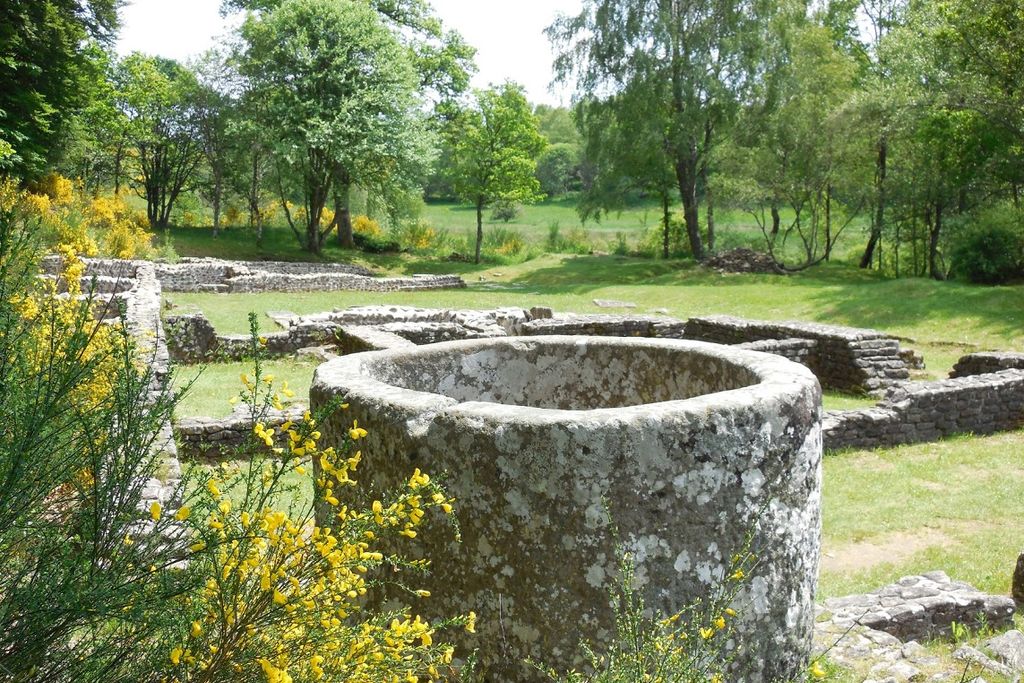
The site of Les Cars
11 points of interest
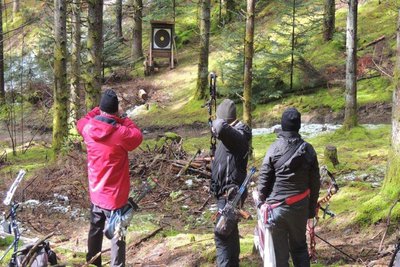
Le Bois de Chaleix - CC HCC  Forestry
ForestryChaleix Wood
The Bois de Chaleix, with a ground area of about 150 ha, was acquired recently by the commune of Bugeat. Bordered by the Vézère river, it is composed of deciduous and coniferous trees. It offers many possibilities for sporting activities: hiking, orienteering, trail running, fishing and archery.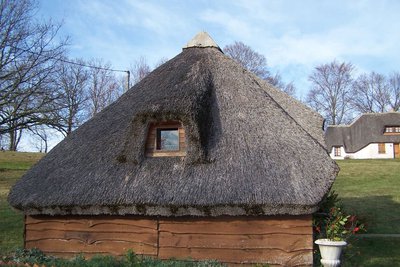
Varièras - G.Salat - CC HCC  Heritage site
Heritage siteThe village of Varièras
Varièras symbolises the renewal and creativity of the Plateau: if the cottage represents the traditional rural habitat of our region, the thatch is what predominates in this village of about fifty cottages. These buildings are real people's homes and are private properties that cannot be visited. On the descent after the village, the paved path goes down to the so-called Roman bridge of Variéras.
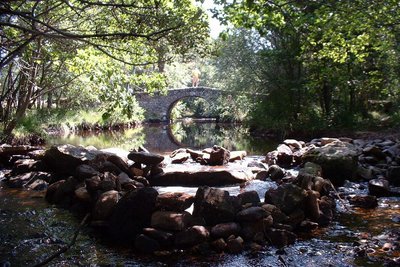
Le pont de Variéras - G.Salat - CC HCC  Heritage site
Heritage siteThe Variéras bridge
On the descent after Varièras, the paved path goes down to the Roman bridge. Granite is everywhere in the traditional buildings of the Millevaches plateau, such as the villages of Pérols and Bugeat. From the extraction of rock to the work of artists and traditional local buidings, the Granite House, a permanent exhibition within the Bugeat tourist office, is a starting point for many discoveries.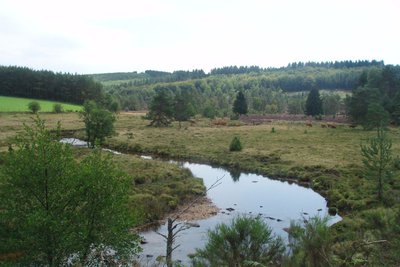
G.Salat - CC HCC  River
RiverThe Ars stream
Taking its source in the heart of the Plateau de Millevaches on the Longeyroux peat bog, the Ars becomes the beginning of the Vézère at its confluence with other streams at Pérols, then joins the Vézère which itself flows into the Dordogne after having travelled more than 200 km. The excellent quality of its waters is confirmed by the presence of the otter.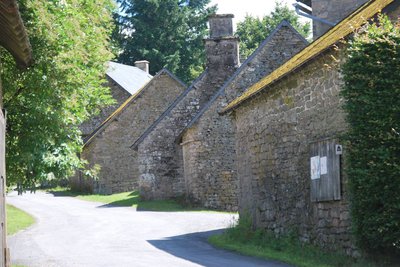
G.Salat - CC HCC  Heritage site
Heritage siteThe village of Ars
The villages of Haute-Corrèze are all involved in agriculture. Walking through these hamlets always produces interesting discoveries during a hike: barns, mansions, crosses, bread ovens... Don't miss the bread oven at Ars. The base of the cross and the granite vat are a reminder that the Gallo-Roman site is not far away, as these elements were probably reused stones from the site.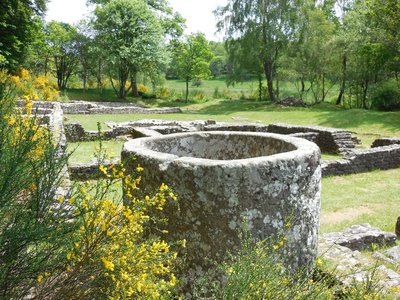
Site gallo-romain des Cars - g.salat  Archaeology
ArchaeologyGallo-Roman remains at Les Cars
The Gallo-Roman remains of Les Cars are composed of two funerary buildings and a huge dwelling located 200 m. below. The presence, in the heart of an agricultural estate, of an impressive villa owned by a landowner linked to two private mausoleums, dating from the 2nd and 3rd centuries AD, is a hypothesis that remains to be confirmed. This site, famous for its monolithic granite tank, is open all year round.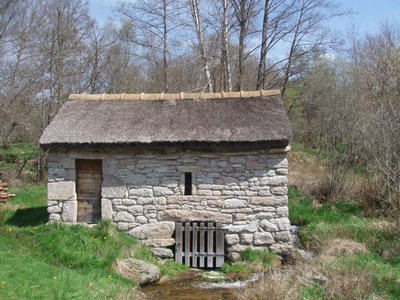
Moulin des Maisons - g.salat  Small patrimony
Small patrimonyMoulin des Maisons
There is no small river in Haute-Corrèze that was not used by one or more mills; every farm, every village had its own. Of modest size, they were most often used to grind grain for livestock feed. Proof of the population's attachment to its local heritage, the Moulin des Maisons has been carefully restored.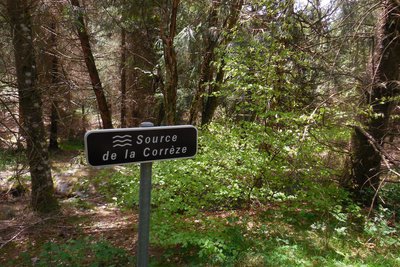
Sources de la Corrèze - G.Salat - CC HCC  River
RiverThe river Corrèze
At the edge of the forest track (be vigilant because some of it is steep), at an altitude of 910 metres, the Corrèze river rises in the heart of the Plateau de Millevaches. Behind the rock, there is a small wet area from which flows a thin stream of water that is then lost in the forest. 100 km further on, after taking water to Tulle and Brive, the Corrèze flows into the Vézère.
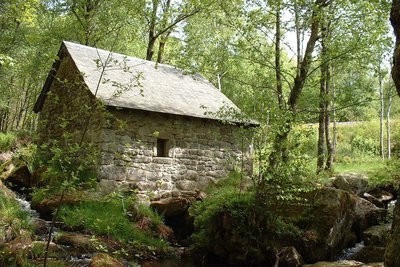
Les moulins de Razel - G.Salat - CC HCC  Heritage site
Heritage siteRazel's mills
The unusual thing about Razel is its three mills on the same site, powered by an ingenious water control system. While the inhabitants of the villages of Chaumeil and Razel built the collective mill in the middle, two wealthier families built the other two buildings. These mills were built in a rustic style and were mainly used to grind cereals for livestock.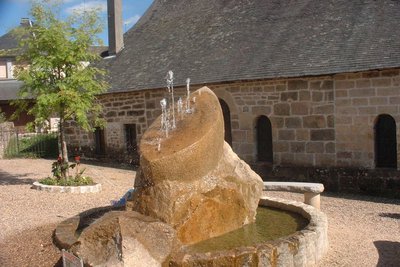
Le bourg de Bugeat - G.Salat - CC HCC  Heritage site
Heritage siteThe village of Bugeat
Granite is everywhere in the traditional buildings of the Millevaches plateau, such as the village of Bugeat. From the extraction of rock to the work of artists and traditional local buidings, the Granite House, a permanent exhibition within the Bugeat tourist office, is a starting point for many discoveries.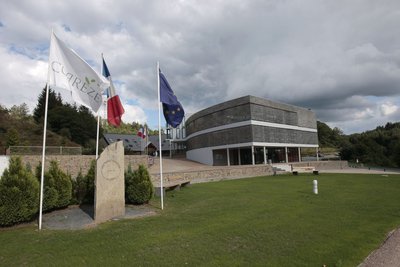
Espace 1000 Sources - CC HCC  History
HistoryEspace 1000 Sources
The circuit starts near the Espace 1000 Sources stadium, a training centre that welcomes groups of sports enthusiasts who love the great outdoors. Behind this centre is Alain Mimoun, winner of the Sydney 1956 Olympic Games marathon, who had fine-tuned his preparations in Bugeat.
Description
Start at the edge of the water behind the stadium grandstand. Set off on the path to the forest.
- Departure : Trois Ponts lake, Bugeat
- Arrival : Trois Ponts lake, Bugeat
- Towns crossed : Bugeat, Pérols-sur-Vézère, Saint-Merd-les-Oussines, Ambrugeat, and Bonnefond
Forecast
Altimetric profile
Information desks
Place du Champ de Foire, 19 170 Bugeat
Transport
Bugeat Station
Access and parking
In Bugeat, on the D979, head towards the Espace 1000 Sources then the Etang des 3 Ponts. Start off behind the stadium grandstand.
Parking :
Report a problem or an error
If you have found an error on this page or if you have noticed any problems during your hike, please report them to us here:
